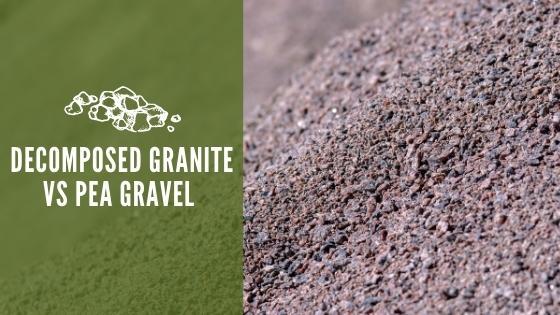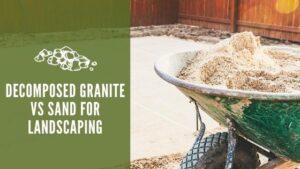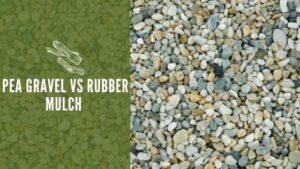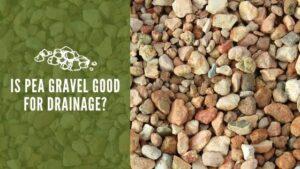Decomposed Granite vs Pea Gravel

Choosing the right material for your pathways and other landscape needs is important, and there are many factors that you need to consider.
Decomposed granite and pea gravel are two popular materials, but which one is the right one for your project?
What Is the Difference Between Pea Gravel and Decomposed Granite?
Decomposed granite is a natural stone made by crushing larger pieces of granite into smaller ones. On the other hand, pea gravel is harvested from a gravel mine and is screened to be of uniform size and shape. Crushed granite tends to have a rougher surface than pea gravel. Pea gravel has been smoothed by erosion and is similar to river rocks.
If you are thinking about using these in a walkway, decomposed granite provides better traction than pea gravel. Granite can be rough on the feet, and pea gravel tends to have a softer texture underfoot.
How Long Does Decomposed Granite Last?
Granite is a tough rock, and it is a long-lasting material, even when crushed into smaller pieces. When used in an area of the landscape that will not be walked upon or moved around considerably, the material’s durability is less important.

If you are using the material for pathways that will have continual foot traffic, you must consider that the pieces will rub together and break down a little more every time they are walked upon. The strength of granite in its natural state makes it more resistant to erosion and breaking down than other choices.
Due to the shape, granite tends to compact more readily than pea gravel. Both materials offer excellent drainage and are durable. Both pea gravel and granite will need to be refreshed every so often to keep it looking smooth. You can expect to refresh granite about every five to ten years, but this may have to be done more frequently in areas that receive high foot traffic.
How Long Does Pea Gravel Last?
One thing that makes pea gravel different from crushed granite is that it can consist of many types of rocks. This means that it can have varied wear qualities depending on the area from which it was harvested. Granite is one of the hardest stones on the planet, and almost anything else will wear down more quickly by comparison. You might have to refresh a pea gravel area every three to five years.
One thing to consider is that pea gravel tends to decompose into sand that will work its way down to the soil level over time. This tends to form a hard surface that can affect drainage. When this happens, it is usually recommended that you remove all the pea gravel and replace it, rather than just putting more on top. This may also happen with granite, but the process happens more slowly.
Cost Comparison
Several considerations can affect which one is the cheaper alternative. Of course, you have to consider aesthetics and your goal for the project. Crushed granite is a popular choice for driveways or walkways with heavy traffic because the shapes make the pieces fit together to make a solid surface. Pea gravel tends to come in a wider range of colors, but granite tends to be limited to a range of grays.
You can expect to pay about $40 per cubic yard for decomposed gravel. Many landscapers will compact each layer before adding the next for durability when installing it. Pea gravel averages about $35-$50 per cubic yard.
When it comes to price per cubic yard, both materials are similar, but you might need different thicknesses. For instance, you only need to put down about two to three inches if you use pea gravel for decorative purposes. The same holds for decomposed granite, but if you are laying down a driveway, about 8 inches is recommended. The thickness of the material will significantly affect the project’s overall cost.
As you can see, both pea gravel and decomposed granite have advantages and disadvantages. Many people consider gravel to be the more visually appealing option for creating a natural look in the landscape and for use around plants. Decomposed granite is often chosen when durability is a factor in high-traffic areas. The most important thing is to carefully consider your needs and use when choosing the right material.






